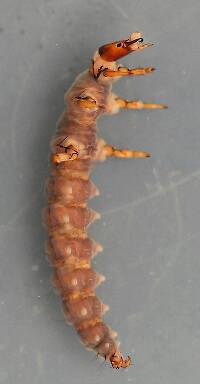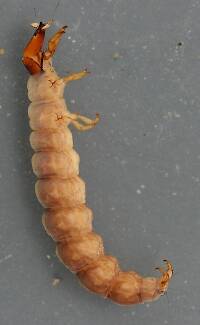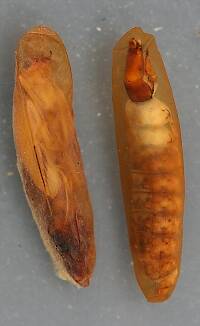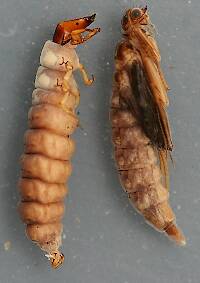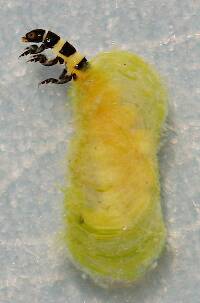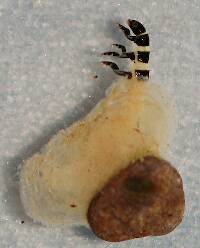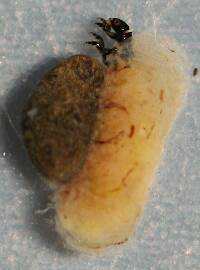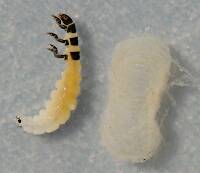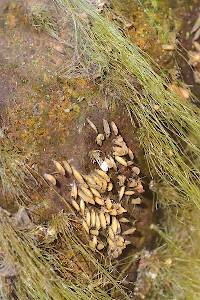
Hex Mayflies
Hexagenia limbata
The famous nocturnal Hex hatch of the Midwest (and a few other lucky locations) stirs to the surface mythically large brown trout that only touch streamers for the rest of the year.
Featured on the forum

Troutnut is a project started in 2003 by salmonid ecologist Jason "Troutnut" Neuswanger to help anglers and
fly tyers unabashedly embrace the entomological side of the sport. Learn more about Troutnut or
support the project for an enhanced experience here.
LittleJ on May 16, 2010May 16th, 2010, 11:18 am EDT
So while flipping rocks today I had an interesting find. There were caddis pupa tethered to the bottom of the rock in what looked like a clear tube. To the people that know about these types of things. Would this be the pupal case they make after leaving their rock case, right before they emerge? Or could their case have broken apart and this would be what they would look like inside their case. Either way it was cool to get a look at a caddis pupa unharmed prior to emergance.
Jeff
Jeff
Creno on May 16, 2010May 16th, 2010, 3:08 pm EDT
Was the "case" tan colored, and sorta inflated like a balloon? If so, sounds like a Rhyacophila pupa. Search on Rhyacophila above for a picture. The "case" is a cocoon that the larva makes within the actual pupal case. A couple families (rhyacophilds, glossosomatids hydrobiosids) make these internal cocoons within the case. The fact that you found just the case suggests a rhyacophild since they make very loose collections of stones for their pupal case. Often the case is connected to a couple rocks so when you pick up a rock the case separates stays with one rock and the pupal cocoon is still attached to another. If your critter didn't have the tan cocoon let us know and I will make another guess :-)
LittleJ on May 16, 2010May 16th, 2010, 3:17 pm EDT
Thanks creno! I don't believe that the case was Tan. It really just looked like a clear plastic tube. However the Ryachophila sounds good enough for me.
Thanks
Thanks
Creno on May 16, 2010May 16th, 2010, 3:43 pm EDT
If it was a tube, with a hole at either, or both ends, it probably wasn't a rhyacophilid. Rhyacophila cocoon are pretty distinctive and Jason's picture is very good.
http://www.troutnut.com/specimen/560
http://www.troutnut.com/specimen/560
Quick Reply
Related Discussions
Topic
Replies
Last Reply
3
Feb 12, 2009
by Creno
by Creno
0
Apr 12, 2007
by Litobrancha
by Litobrancha
3
Aug 12, 2012
by Taxon
by Taxon



